Introduction to Peptides for Recovery and Muscle Growth
Understanding the Role of Peptides in the Body
Peptides are made up of short chains of amino acids that are very important for many bodily functions. Basically, they are signaling chemicals that can make cells do many things, like make hormones, keep the immune system working, and even fix damaged tissue. Peptides for recovery and muscle growth are particularly valuable for athletes or those involved in physical activities, as they help improve performance by speeding up the process of making muscle protein and assisting in the healing of injuries. Peptides are like messages in the body; they help different systems talk to each other. As you work out, your muscles work hard. Peptides are what help you get stronger afterward.
Benefits of Peptides for Athletes
For athletes, the advantages of incorporating peptides into their regimen can be game-changing. Here are some of the key benefits:
- Accelerated Recovery: Peptides can significantly speed up the healing process from workouts or injuries, allowing you to train harder and more frequently.
- Increased Muscle Mass: They have been shown to stimulate muscle growth through enhanced protein synthesis, providing that push needed to break through plateaus.
- Improved Endurance: Certain peptides can boost vascularity and oxygen delivery, which translates to better endurance during workouts.
Think about how good it will feel when you can do those last few reps without getting tired. Many times, athletes who use peptides to improve their performance and recovery share encouraging stories about how they did it. As the world of exercise changes, knowing about and using these peptides makes your workouts better.
Types of Peptides for Muscle Recovery
BPC-157 Peptide
BPC-157, which stands for Body Protection Compound-157, is one of the peptides that people talk about the most. This peptide comes from a protein that is found in the stomach, and it is known for being very good at healing. When you push your body to its limits, you might hurt it, but BPC-157 might have your back. A lot of athletes say that this peptide helps them heal faster and reduces inflammation. Some of the best things about BPC-157 are:
- Enhanced Tissue Repair: It promotes healing in tendons, ligaments, and muscles, getting you back to the gym sooner.
- Pain Reduction: Users often experience significant decreases in pain, making movement easier during recovery.
- Increased Blood Flow: This peptide can improve blood circulation, which is essential for delivering nutrients and oxygen to injured tissues.
For example, a friend of mine who regularly competes in triathlons swears by BPC-157 after suffering a shoulder injury. He noticed a marked improvement in mobility and comfort within just weeks of starting the peptide.
TB-500 Peptide
Another heavy hitter in the recovery realm is TB-500, a peptide that is derived from Thymosin Beta-4. TB-500 is primarily known for its ability to promote healing and aid muscle regeneration. Here’s what makes TB-500 noteworthy:
- Muscle Recovery: It enhances cell migration and promotes new blood vessel formation, which is essential for muscle repair.
- Anti-inflammatory Properties: It helps reduce inflammation, aiding in quicker recovery times for overworked muscles.
- Flexibility and Range of Motion: Users often experience improved flexibility, which is crucial for athletes looking to maintain peak performance levels.
In personal experience, I’ve noticed faster recovery when incorporating TB-500 into my routine after intense strength training. It’s like having a secret weapon that helps keep me on top of my game. Together, these peptides create a robust support system for muscle recovery, aiding athletes in achieving their fitness goals with fewer setbacks.
Peptides for Muscle Growth
IGF-1 Peptide
When it comes to muscle growth, IGF-1 (Insulin-like Growth Factor 1) is a powerhouse peptide that deserves your attention. Naturally produced by the liver in response to growth hormone, IGF-1 plays a critical role in promoting cell growth and regeneration. Here’s how IGF-1 can boost your muscle-building efforts:
- Stimulates Muscle Growth: It increases muscle protein synthesis, which is essential for building mass after intense workouts.
- Enhanced Recovery: Faster recovery times mean you can hit the gym more frequently, pushing your limits with less downtime.
- Fat Loss: Studies suggest that IGF-1 may help in fat metabolism, allowing you to build muscle while shedding excess pounds.
A fellow fitness enthusiast I know integrated IGF-1 into his regimen and was blown away by the results—a noticeable increase in lean muscle mass that came alongside improved strength.
GHRP-6 Peptide
GHRP-6 (Growth Hormone Releasing Peptide-6) is another peptide that complements muscle growth well. This peptide stimulates the pituitary gland to release more growth hormone, amplifying the body’s natural growth processes. The benefits of GHRP-6 include:
- Increased Growth Hormone Levels: This leads to greater muscle growth and improved recovery.
- Appetite Stimulation: While some may view this as a negative, increased appetite can be beneficial for those struggling to consume enough calories for muscle gain.
- Fat Loss: Coupled with its muscle-building effects, GHRP-6 can also aid in reducing body fat.
Reflecting on my training sessions, I’ve witnessed significant gains when utilizing GHRP-6 in conjunction with my workout routine. It’s an effective way to enhance muscle growth while staying focused on achieving your fitness goals. By exploring these powerful peptides, you gain valuable tools to supercharge your muscle growth journey.
Incorporating Peptides into Your Fitness Routine
Dosage and Administration of Peptides
Now that you’re familiar with the powerful benefits of peptides for muscle growth let’s talk about how to incorporate them into your fitness routine effectively. Proper dosage and administration are key to maximizing their potential. Generally, recommended dosages can vary based on the specific peptide and individual goals, but here are some common guidelines to consider:
- IGF-1: Typically administered in doses ranging from 20 to 100 mcg per day.
- GHRP-6: A common dosage is often between 100 to 300 mcg, taken 3 times daily.
- BPC-157: Dosages can range from 200 to 600 mcg, depending on the severity of an injury.
Remember, these are general suggestions, and it’s essential to consult with a healthcare professional or a knowledgeable coach to tailor your dosage based on your specific needs and conditions.
Combining Peptides with Exercise and Nutrition
If you want to get the most out of your peptide plan, you must also follow a good nutrition and workout plan. How to do it:
- Integrate a Structured Workout Program: To create a well-rounded routine, focus on a mix of strength training, cardiovascular exercise, and flexibility workouts.
- Prioritize Nutrition: Consume adequate protein, healthy fats, and complex carbohydrates to support muscle recovery and growth. Foods such as chicken, fish, quinoa, and leafy greens are excellent choices.
- Stay Hydrated: Proper hydration supports metabolic functions, including the effectiveness of peptides.
From my experience, I’ve noticed the best results when I align my peptide intake with a high-protein diet and a balanced workout schedule. After a few months of this combined approach, my strength and recovery improved significantly. By thoughtfully incorporating peptides into your fitness routine, you set the stage for enhanced performance and optimal results.
The Science Behind Peptides and Muscle Repair
Mechanisms of Action of Peptides
Understanding the science behind how peptides operate can deepen your appreciation for their role in muscle repair. These powerful molecules work at the cellular level, triggering complex biological responses that promote healing and recovery. At their core, peptides act as signals in the body, binding to specific receptors and initiating a cascade of beneficial reactions. Here are some of the fundamental mechanisms through which peptides facilitate muscle repair:
- Enhanced Protein Synthesis: Many peptides, such as IGF-1, stimulate the synthesis of proteins, which form the building blocks of muscle tissue. This process is vital for repairing damaged fibers after intense workouts.
- Increased Growth Hormone Release: Peptides like GHRP-6 encourage the pituitary gland to release more growth hormone, further promoting muscle growth and recovery.
- Improved Blood Circulation: Peptides can enhance angiogenesis—the formation of new blood vessels—thereby increasing nutrient and oxygen delivery to injured tissues, facilitating quicker healing.
After learning about these mechanisms, I became more mindful of how I utilize peptides in conjunction with my training. I’ve experienced firsthand how targeted peptide therapy helps my body recover more effectively, allowing me to tackle new challenges each week with renewed vigor. By embracing the scientific principles behind peptides, you can make informed decisions about optimizing their benefits in your muscle repair journey.
Peptides vs. Traditional Supplements for Muscle Health
Comparison of Peptides and Protein Powders
When it comes to supporting muscle health, there are many options available, most notably peptides and traditional protein powders. While both can complement your fitness goals, they work in different ways. Protein Powders:
- Composition: Protein powders, primarily made from whey, casein, or plant sources, provide a quick and convenient dose of protein.
- Immediate Supply: They are effective for muscle recovery post-workout due to their rapid absorption, supplying essential amino acids.
- Volume of Intake: You often need to consume larger quantities to achieve desired protein levels.
Peptides:
- Bioactivity: Unlike protein powders, peptides are smaller, which allows them to be absorbed and utilized by the body more quickly.
- Specific Action: They promote specific physiological responses, such as muscle growth and repair, while also providing benefits like increased metabolism and fat loss.
While protein powders are great for meeting daily protein needs, incorporating peptides into my regimen has led to more targeted growth and recovery.
Efficacy of Peptides Compared to Amino Acids
When comparing peptides to individual amino acids, it’s important to recognize their unique advantages.
- Complex Effects: Peptides can produce a broader range of effects, often promoting muscle synthesis, recovery, and fat loss simultaneously.
- Synergistic Benefits: They work together to create complex biological effects rather than isolated, singular actions found with amino acids.
For example, when I switched from taking amino acids alone to peptides, I saw a huge difference in how quickly my muscles grew and recovered. Using these strong molecules gives you a better chance at overall muscle health, which makes them a great choice for anyone serious about getting fit.
Future Trends in Peptide Research for Muscle Growth
Innovations in Peptide Technology
As we look to the future of peptide study for muscle growth, some very exciting new ideas are on the way that could change the way we work out and recover. Not only are the new developments in peptide technology very encouraging, but they are also very interesting. Targeted Design of Peptides:
- Precision Engineering: Researchers are developing highly specific peptides that can target specific tissues or receptors, promising more effective outcomes with fewer side effects.
- Personalized Nutrition: With advancements in genomics, the design of personalized peptide regimens tailored to individual genetic profiles becomes a reality, optimizing the benefits for muscle growth.
Delivery Systems:
- Novel Administration Methods: Innovations in delivery systems—such as transdermal patches and liposomal forms—make peptides more accessible and easier to incorporate into daily routines.
- Sustained Release Formulations: Future formulations may allow for longer-lasting peptide effects, reducing the frequency of administration while maximizing benefits.
As I think back on my trip, I see how research into peptide technology could change not only health but also athletic performance. If we keep putting money into studies, we can expect a wave of breakthroughs that will help muscles grow, speed up recovery, and make it easier for all of us to reach our fitness goals. It’s an exciting time to be a part of the fitness group because the future looks bright.






